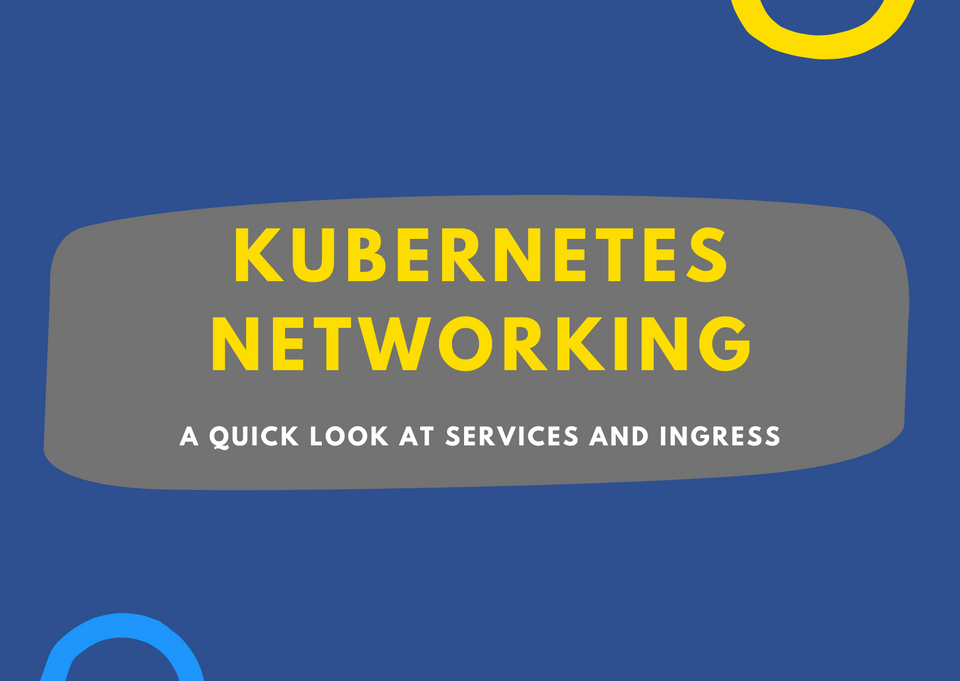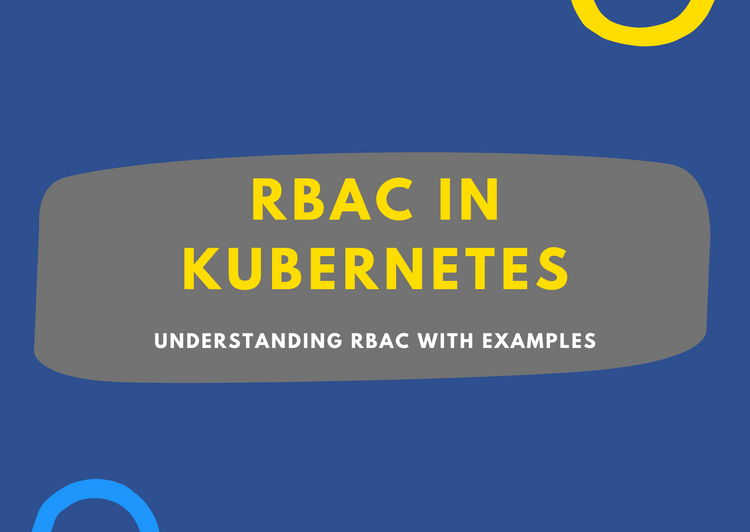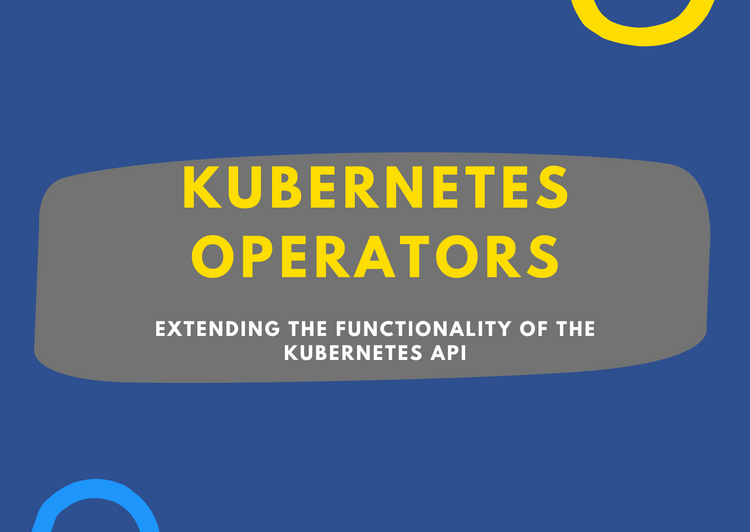Demystifying Kubernetes Networking: A Guide to Services and Ingress Controllers

Introduction to Kubernetes Networking
Kubernetes is a powerful container orchestration system that allows developers to deploy and manage highly scalable and resilient applications. One of the key challenges in deploying microservices-based applications in Kubernetes is managing networking between different services. This blog will provide an introduction to Kubernetes networking and why it matters.
At its core, Kubernetes is a distributed system that manages containers across multiple nodes. Containers are lightweight, portable, and ephemeral. They can be rapidly spun up or down in response to changes in demand or failures.
However, this dynamic nature of containers also creates challenges for networking.
How do you route traffic between different containers and services when their IP addresses keep changing?
Kubernetes provides two primary mechanisms for managing network traffic:
- Services
- Ingress Controllers
Services allow you to expose your application within the cluster, while Ingress Controllers allow you to route traffic from outside the cluster to your Services.
By understanding these concepts, you can build highly scalable and resilient applications in Kubernetes.
Understanding the Basics of Networking in Kubernetes
The Kubernetes network model consists of two types of network entities:
Pods
- A Pod is the smallest deployable unit in Kubernetes, and it represents a single instance of an application.
Services
- A Service is an abstraction that defines a logical set of Pods and a policy by which to access them. Services provide a stable IP address and DNS name that can be used to communicate with Pods.
At its core, Kubernetes networking addresses four fundamental concerns:
- container-to-container communications
- pod-to-pod communications
- pod-to-service communications
- external-to-service communications
Kubernetes, unlike other container orchestration systems, assigns an individual IP address to each pod, creating a clean, straightforward network model. This model eliminates the need for link mapping and port translations, simplifying the process and reducing potential points of failure. It's this design that allows Kubernetes to scale and manage complex, distributed systems efficiently.
However, while this model simplifies many aspects, it also introduces new components and concepts like Services and Ingress Controllers, which we will explore in the following sections.
Understanding the Challenges of Networking in Kubernetes
Kubernetes is a distributed system that manages containers across multiple nodes, and it introduces several challenges in terms of networking.
One of the key challenges is managing IP addresses for Pods. Containers are ephemeral, which means their IP addresses can change at any time. This dynamic nature makes it difficult to route traffic between different containers and services.
Another challenge is managing the complexity that comes with operating a distributed system. As the number of services and pods increases, so does the complexity of the network. Ensuring consistent network policies, load balancing and service discovery across a large number of pods can be a daunting task.
Additionally, Kubernetes networking relies heavily on the underlying network infrastructure, which means that any limitations or issues at the infrastructure level can impact the performance and reliability of your Kubernetes applications.
Furthermore, securing network communication within and outside the cluster is another significant challenge. Implementing network policies, managing access controls, and encrypting network traffic are all essential for maintaining a secure Kubernetes environment.
Additionally, Kubernetes offers multiple networking solutions, such as network plugins, overlay networks, and Service meshes. Each solution has its own trade-offs in terms of performance, security, and complexity.
Managing networking in Kubernetes requires an understanding of these challenges and the ability to choose the right networking solution for your application.
What are Kubernetes Services?
Kubernetes Services provide a way to expose your application to other services running within the Kubernetes cluster.
A Service is an abstraction that defines a logical set of Pods and a policy by which to access them. Services provide a stable IP address and DNS name that can be used to communicate with Pods, regardless of how many Pods are running at any given time.
This decouples the logical service from the underlying network implementation and enables seamless scaling and failover of your application.
Kubernetes supports four types of Services:
- ClusterIP
- NodePort
- LoadBalancer
- ExternalName
Each of these provides different levels of network accessibility and load balancing capabilities. By leveraging Kubernetes Services, you can build highly scalable and resilient applications in a distributed environment.
Types of Kubernetes Services
As mentioned earlier, there are four main types of Services in Kubernetes, each serving a unique purpose:
ClusterIP
This is the default type of Kubernetes Service. It provides a single IP address that other applications within the cluster can use to communicate with the Pods backing the Service.
This type of Service is particularly useful for internal communications within the cluster.
NodePort
A NodePort Service is accessible on a static port on each Node in the cluster. Kubernetes automatically routes incoming traffic on the NodePort to the Service.
This type of Service allows for external communications to the cluster, but requires a specific port to be open on every Node, which can be a security concern.
LoadBalancer
A LoadBalancer Service automatically provisions an external load balancer that routes traffic to the Service.
This type of Service is typically used in cloud environments where the cloud provider is able to provision a load balancer.
ExternalName
Unlike the other types of Services, an ExternalName Service doesn't route traffic to Pods, but instead returns a CNAME record in response to DNS queries.
This can be used to provide a Service interface to external services.
What is an Ingress controller?
An ingress Controller is a Kubernetes resource that allows you to route traffic from outside the cluster to Services within the cluster. In other words, an Ingress Controller acts as a reverse proxy that exposes HTTP and HTTPS routes from outside the cluster to Services within the cluster.
In Kubernetes, Services are only accessible within the cluster by default. To expose a Service to the outside world, you need to use an Ingress Controller.
Ingress Controllers work by defining a set of routing rules that map incoming requests to Services based on the hostname, path, or other criteria specified in the rule.
Kubernetes provides a default Ingress Controller, but it only supports basic routing rules. For more advanced routing rules and features like SSL termination, you can use third-party Ingress Controllers.
There are many Ingress Controllers available for Kubernetes, including Nginx, Traefik, Emissary, Contour, Kong, and Istio. Each Ingress Controller has its own set of features and trade-offs, so it’s important to choose the right one for your application and environment.
How Ingress Controllers Work in Kubernetes
Ingress Controllers in Kubernetes play a crucial role in managing external access to the services within a cluster. Here's a brief overview of how they work:
Ingress Resource
First, you define an Ingress Resource in your cluster. This is a Kubernetes object that contains configuration rules for routing external HTTP(S) traffic to different services within the cluster. These rules can include hostnames, paths, and other criteria.
Ingress Controller
The Ingress Controller is a pod within the cluster that is responsible for implementing the rules defined in the Ingress Resource. It continuously monitors the API server for updates to the Ingress Resource and reconfigures itself to fulfill the desired state.
Traffic Routing
When an external request comes into the cluster, the Ingress Controller routes the request to the appropriate service based on the rules defined in the Ingress Resource. This could involve routing based on the request's hostname, path, or other criteria.
Load Balancing
In addition to routing, the Ingress Controller also handles load balancing of traffic between different pods of a service. This can be based on various algorithms such as round-robin, least connections, or IP hash.
SSL/TLS Termination
The Ingress Controller can also handle SSL/TLS termination for secure connections. This means that the Ingress Controller decrypts incoming requests and sends them to the appropriate service as plain HTTP, offloading the decryption task from the service itself.
Authentication and Authorization
Some Ingress Controllers can also handle authentication and authorization, ensuring that only authorized users can access certain services.
Best Practices for Managing Services and Ingress Controllers in Kubernetes
Managing Services and Ingress Controllers effectively in Kubernetes is crucial for the smooth operation of your applications. Here are some best practices:
Define Clear Ingress Rules
When setting up your Ingress Resources, make sure your rules for routing traffic are clear and well-defined. This will help ensure that traffic is routed correctly to your services.
Use Namespaces
Use namespaces to isolate your services and Ingress Resources. This can help in managing resources in large clusters and can provide an extra layer of security.
Leverage Labels and Selectors
Use labels and selectors for easier management of your services and Ingress Resources. They allow you to organize and identify your resources effectively.
Secure Your Ingress Controllers
Always ensure that your Ingress Controllers are secure. This includes setting up SSL/TLS for secure connections and implementing authentication and authorization where necessary.
Monitor Your Ingress Controllers
Regularly monitor the performance and logs of your Ingress Controllers. This can help you identify and resolve any issues quickly.
Choose the Right Ingress Controller
Different Ingress Controllers have different features. Choose the one that best fits your needs. For example, if you're using AWS, you might want to use the AWS ALB Ingress Controller.
Use Resource Quotas and Limits
To prevent resource exhaustion, it's a good practice to set resource quotas and limits for your services and Ingress Controllers.
Keep Up with Updates
Kubernetes is actively developed and regularly updated. Make sure to keep your Ingress Controllers updated to benefit from new features and security patches.
Remember, these are general best practices and might need to be adapted based on your specific use case and environment.
Conclusion: The Power of Kubernetes Networking
In conclusion, Kubernetes networking is a powerful and flexible system that forms the backbone of communication within a Kubernetes cluster. It provides a unified and consistent way to manage and control how pods, services, and external sources communicate with each other.
The introduction of Services and Ingress Controllers into the Kubernetes networking model has revolutionized the way we manage traffic within and into the cluster. Services, in Kubernetes, act as a stable interface to a group of pods, ensuring that the applications housed within those pods can communicate with each other seamlessly, irrespective of the individual pod lifecycle. This abstraction not only simplifies internal communication but also provides a level of reliability and consistency that is crucial for maintaining application performance and uptime.
On the other hand, Ingress Controllers are the gatekeepers of external traffic, managing the ingress of data into the cluster. They provide a plethora of features, including load balancing, SSL/TLS termination, and even authentication and authorization. These features allow for a fine-grained control over the traffic, ensuring that the right request reaches the right service in the most efficient manner possible. Furthermore, the ability to offload tasks such as SSL/TLS termination and authentication to the Ingress Controller can significantly reduce the complexity of the applications and services within the cluster.
Whether you're deploying a straightforward application or managing a complex microservices architecture, Kubernetes networking provides the tools and features you need to ensure smooth, secure, and efficient communication. It's this power, flexibility, and the vibrant community support that make Kubernetes the preferred choice for container orchestration in today's cloud-native world. As we continue to push the boundaries of what's possible with Kubernetes, we can look forward to even more powerful and flexible networking solutions in the future.


Comments ()